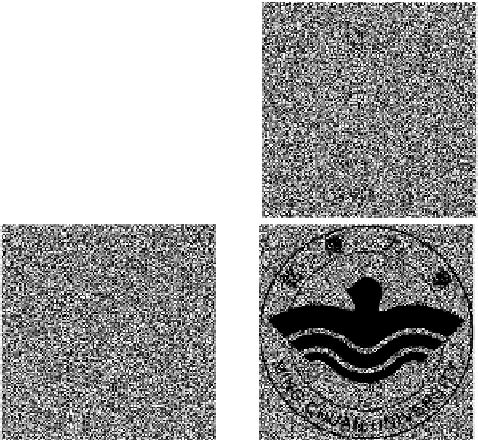Cryptography Reference
In-Depth Information
and two black subpixels if p is white, or all four black subpixels when p is black.
When all pixels in p are encoded in this way, where each p's random choice
for encoding alternatives is independent, the encoded shares S
1
(containing
all s
1
's) and S
2
(containing all s
2
's) are indeed random pictures, respectively.
When S
1
and S
2
are superimposed, all of the four subpixels are black in
the reconstructed blocks corresponding to each black pixel in P, while two
subpixels are white and the other two are black corresponding to each white
pixel in P. Based upon such a difference, our visual system recognizes the
white and black pixels in P from S
1
S
2
. We say that the reconstructed
image S1 S
2
recovers P.
Figure 3.1 shows the implementation results of the encoding scheme in
Table 3.2.
Figure 3.1(a) is a secret binary image P, Figures 3.1(b) and (c)
are the two encoded shares S
1
and S
2
, which are random pictures revealing
no information about P and Figure 3.1(d) illustrates the reconstructed image
S
1
S
2
that recovers P visually.
(a)
(b)
(c)
(d)
FIGURE 3.1
Implementation results of visual one-secret sharing in two shares: (a) P, (b)
S
1
, (c) S
2
, (d) S
1
S
2
.









Search WWH ::

Custom Search